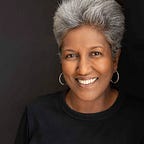PolisPlan Discuss the Circular Economy in Adelaide
We had our most engaged audience yesterday to discuss ideas around the Circular Economy in Adelaide. Mark Parnell, MLC and the South Australian Greens hosted our presentation. Thanks to their hard work, we had drawn a crowd that filled The Joinery.
We were here to discuss what cities of the future will look like. We are advocating for decentralised, resilient cities, with residents that collaborate with each other to provide for their basic needs locally. We discussed how we could source our food, water, energy and housing by resonating more closely with the natural cycles of our environment. It is amazing to realise that we can so easily create an abundance of what we need by tapping into what nature provides, rather than the current reliance on centralised systems that pollute our environment, are expensive to maintain and because of the scale and complexity are wasteful. This waste is reflected in our high utility bills.
It is exciting to be in South Australia because it’s a showcase for the nation when it comes to energy. Renewable energy accounts for 40% of South Australia’s demands, with 25% of homes already harvesting sunshine through the installation of solar panels. This is in comparison to the rather poor total of 7% renewables in NSW. The Premier of SA recently announced a target of net zero emissions by 2050. We hope our talk will inspire more people to start thinking of how they too could transition to a future that uses less carbon, creates community but is also better for the local economy.
Water of course is the big constraint here in Adelaide. This city gets less than half the rainfall that residents enjoy in Sydney. While Adelaide has 10 reservoirs that feed their town water, in a dry year more than up to 85% of this water is pumped from the Murray River (which bypasses Adelaide). Not a resilient solution, given Adelaide is at the end of a river that has high demand by irrigators upstream. The system in Sydney is not that different with 80% of water coming from Warragamba Dam. The big cities in Australia are perfect examples of the linear, “Take, Use, Dispose”, system that is also highly centralised. We are proposing decentralised solutions that focus on the local conditions in each place. Harvesting water and replenishing aquifers in the wet season is one example of how this can be achieved.
The principles of the Circular Economy are about striving for zero waste. This applies equally to how we deal with food production and how we build houses that have smaller private spaces with larger shared spaces. A good example of this is Christie Walk, a cohousing development in the heart of Adelaide.
In food production, the ideas of Permaculture are already well developed as a circular, integrated process where the waste of one process is food for another. We are also advocating for the integration of food production with water and energy management, all circulating around passively designed living and work spaces. An example of this is where our sewerage can be treated in a wetland to then irrigate our crops and then flow to a nearby waterbody. If we design our cities in this way, we will need less money to survive, giving us more freedom in our lives. Empowering our communities this way, is what will eventually create equality and compassion for each other and the earth.
Many people in the audience are inspired and we get lots of questions. It is good to see so many young people in the audience who are already engaged in creating sustainable cities. We are looking forward to our workshop on Saturday where we will brainstorm these ideas further.
First Published by www.polisplan.com.au 27 November 2015
